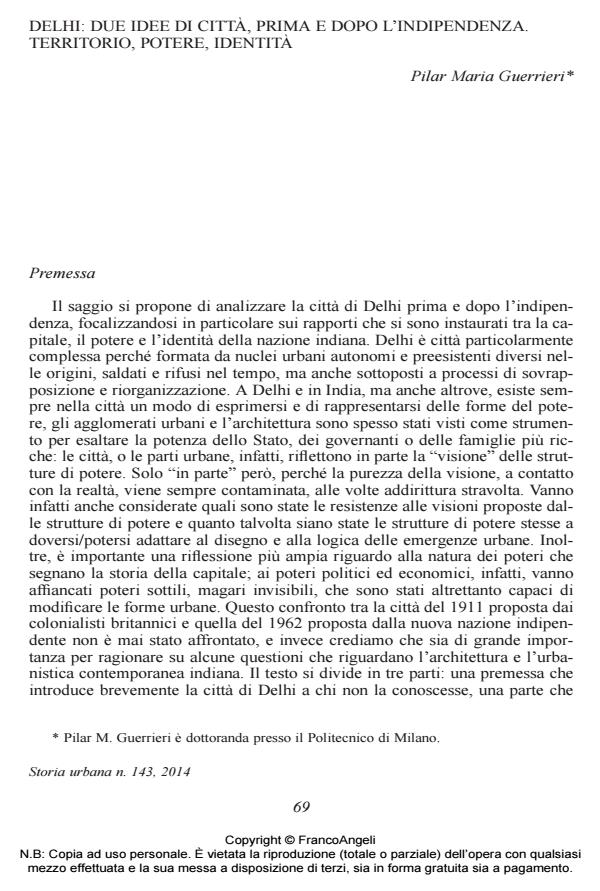Delhi: two ideas of the city, before and after independence. Territory, power and identity. Parole chiave: India, Architecture, Urban planning, Colony, Independence
Journal title STORIA URBANA
Author/s Pilar Maria Guerrieri
Publishing Year 2014 Issue 2014/143
Language Italian Pages 27 P. 69-95 File size 458 KB
DOI 10.3280/SU2014-143004
DOI is like a bar code for intellectual property: to have more infomation
click here
Below, you can see the article first page
If you want to buy this article in PDF format, you can do it, following the instructions to buy download credits

FrancoAngeli is member of Publishers International Linking Association, Inc (PILA), a not-for-profit association which run the CrossRef service enabling links to and from online scholarly content.
The city of Delhi has always attracted dynasties and rulers from all parts becoming the meeting point of different cultures. Delhi drew the attention of the British and has been colonized by them for over a century. The essay focuses on a very important moment of this urban reality: the transition from the late colonial period to that of Indian independence (1947), a moment that shaped Delhi as it is today but has been often overlooked by historians of architecture. In particular, the essay investigates two ideas of the city: the one proposed by the colonizers and the one proposed by the independent and democratic government. It strives to compare the design for the new imperial capital of New Delhi of 1911 and the Masterplan of 1962 that Prime Minister Jawaharlal Nehru wanted to implement. The text will explore the complex and contradictory relationship between the capital, the power and the identity of the Indian nation during this specific historical frame. The way Delhi was perceived by those in power at the time often didn’t correspond to reality and I aim to focus more specifically both on the incongruous relationship between architecture and national image and on those invisible forces, beyond politics and economy, which are able to affect urban forms.
Keywords: India, Architettura, Pianificazione urbana, Colonia, Indipendenza
Pilar Maria Guerrieri, Delhi: due idee di città, prima e dopo l’indipendenza. Territorio, potere, identità in "STORIA URBANA " 143/2014, pp 69-95, DOI: 10.3280/SU2014-143004